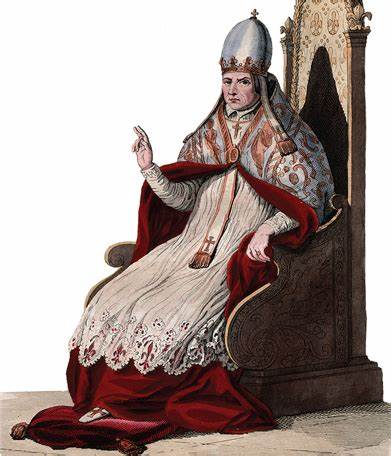Roman Catholic Church in the 15th Century
Pope

By the reign of Henry VIII, the Christian Church had existed for 1500 years. During that period, many theological questions had been settled so that worship practices were firmly inculcated into practice throughout the Holy Roman Empire, Europe, and the English Isles. Even so, secular power continued to confront Ecclesiastical power. The Renaissance with its focus on humanism exacerbated the tensions, disappointments, and doctrinal disagreements that had simmered for centuries before Luther’s overt rebellion. Scholars suggest that three factors lead to the Reformation and the subsequent formation of Protestant churches.
Factors Behind the Reformation
The Church on the eve of the Reformation exhibits the seemingly contradictory features of widespread problems and pervasive vitality. Resentments, abuses, and vulnerabilities are apparent, including anticlericalism, structural problems derived in part from sheer institutional longevity, and the legacy of late medieval schism and conciliarism. At the same time, there were indisputable signs of vigor and renewal, including massive lay support of the Church, the proliferation of lay piety in a wide variety of forms, and widespread efforts at reform. The two broad aspects, perceived corruption and calls for reform, fit together logically, not due to religious decadence or indifference but widespread concern and intense religiosity.
